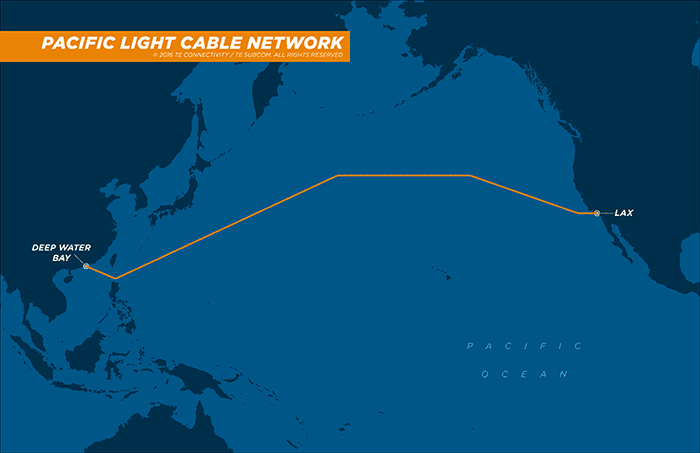Facebook And Google Building Transpacific CableFacebook And Google Building Transpacific Cable
Internet giants team up on super-fast undersea link between Hong Kong and Los Angeles.
October 12, 2016

Google and Facebook announced today that they've teamed with TE SubCom and broadband provider Pacific Light Data Communications to build a high-capacity transpacific submarine cable system between Hong Kong and Los Angeles.
The 12,800-kilometer (about 8,000 miles) Pacific Light Cable Network will provide the first direct undersea route between the two cities with ultra-high capacity, the companies said. The cable will incorporate technology from TE SubCom -- a subsidiary of undersea communications specialist TE Connectivity Ltd. -- that the companies said "effectively doubles the available bandwidth and capacity per fiber pair over a traditional C-band-only designed system."
"PLCN will be one of the highest-capacity trans-Pacific systems, with an initial estimated design capacity of 120 Tbps," Najam Ahman, VP of engineering at Facebook, wrote in a blog post. "PLCN will also be one of the longest direct cable systems in the world, connecting Los Angeles and Hong Kong. Most Pacific subsea cables go from the United States to Japan, and this new direct route will give us more diversity and resiliency in the Pacific. As the number of people using Facebook apps and services continues to grow in the region, PLCN will help further connect Asia and our data centers in the U.S."

PLCN.png
Brian Quigley, director of Google Networking Infrastructure, said in a blog post that the PLCN will provide enough capacity for Hong Kong to have 80 million concurrent HD video conference calls with Los Angeles. This is the sixth submarine cable that Google has helped develop; others include the FASTER cable system that runs between the US and Japan.
Facebook also is building a subsea cable project with Microsoft and Telefonica -- MAREA, a trans-Atlantic link.
In his blog, Facebook's Ahman described PLCN as a flexible system. Compared to the previous turnkey approach to building subsea cable, PLCN "allows for independence between the wet plant and the optical technology," he said.
"Each party can select its optical equipment independently, allowing us to choose from a variety of network equipment that will be interoperable with the system," Ahman added. "This means equipment refreshes can occur as optical technology improves, including taking advantage of advances made during the construction of the system. When equipment can be replaced by better technology at a quicker pace, costs should go down and bandwidth rates should increase more quickly."
Quigley also noted PLCN's flexibility and openness -- traits that both Google's and Facebook's engineering teams prioritize.
"From the get-go, PLCN is designed to accommodate evolving infrastructure technology, allowing us to independently choose network equipment and refresh optical technology as it advances," he wrote.
Plans call for construction to begin this year on the PLCN, which is expected to be operational in 2018.
Read more about:
Subsea CablesAbout the Author
You May Also Like


